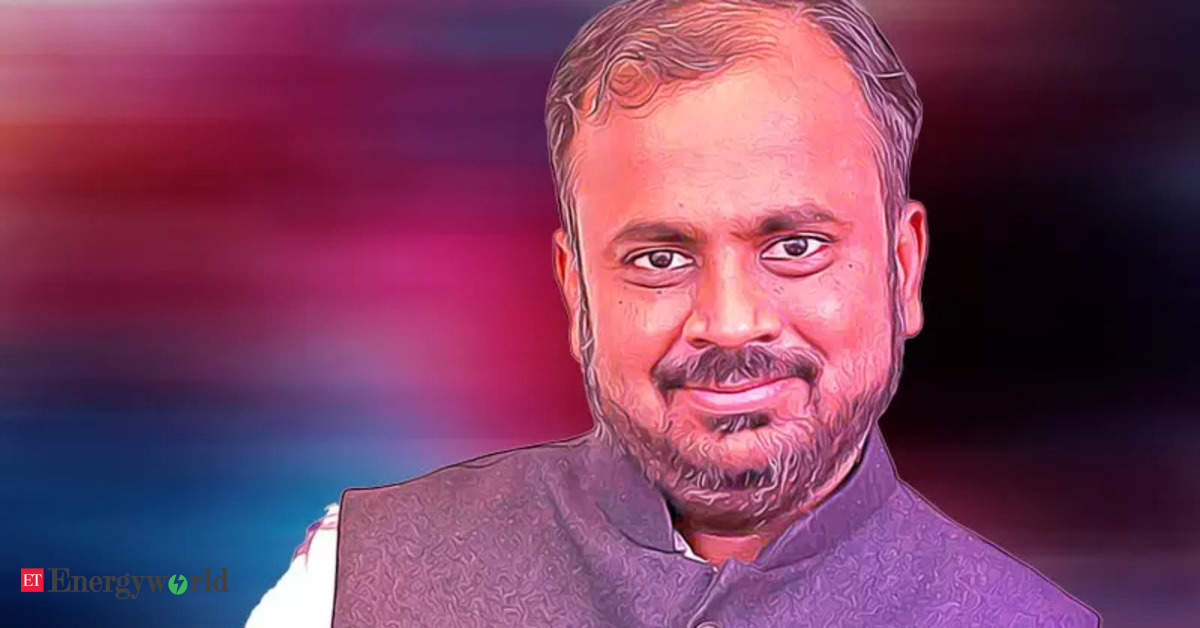Rajat Seksaria, CEO, ACME Group, Energy News, ET EnergyWorld

[ad_1]

New Delhi: The company plans to have two to three green hydrogen projects under construction by the end of March of next year. Right now it is in the process of land acquisition in Tamil Nadu and very shortly will do that in Odisha as well, Rajat Seksaria, chief executive officer, ACME Group told ETEnergyWorld in an exclusive interview. Edited excerpts:
How do you look at the present state of the green hydrogen sector?
People have realised that energy transition cant be achieved solely on the basis of electrons or renewable power, and we need to move into the energy space as well because oil and gas, and other hydrocarbons are the major reasons for carbon emissions. We started with an aim of energy transition but we have seen the impact of global events like COVID and the Ukraine-Russia crisis. So, the imperative of energy transition has now also moved into the space of energy security. These two drives are not counter purpose in the case of hydrogen. Globally, major macro policy action is happening in Hydrogen, including the Inflation Reduction Act in the US. Suddenly US has become a focus of potential investments and activities since it has declared huge subsidies on various renewable energy sources, especially hydrogen, where they have announced $3 per kg. This has led to various projects – which were at a joint table stage in various geographies – being reassessed. The US has catapulted from not being lucrative to being both a market and a producer of these products competitively, globally. Europe, too, has announced a Faster Transition Trajectory. Similarly, India has now approved its hydrogen mission. So, we will see an integration with geopolitics and both energy security and transition at play.
What is your take on the National Green Hydrogen Mission? Do you think the government has missed out anywhere?
Prime Minister Modi called for the Mission in August 2021 and now it is 2023 that they come out with the actual allocation of funds. So, one way to look at it is that it took too long, but the other way to look at it is how hydrogen is to be evolved as a sector with all the global interplay. So, the approach the government has taken is very consultative. The government has done many rounds of consultation at various ministry levels, with individual players or with associations. For example, the initial idea of allocating money was to just incentivise manufacturing of electrolyzers. Then many players, including us, gave feedback that such an incentive will only serve a small part of the purpose because the bigger problem is creating a market. So, you should incentivise the end-product, which is either hydrogen or derivatives of hydrogen. Now, you see the bulk of the allocation has gone to the end-product in the Mission. Out of the Rs 18,000 crore, about Rs 13,000 crore is towards the end-product. This is a positive development.
For comparison, Europe has committed a much larger sum of money, but where we are as a country, $2.4 billion dollar is a very significant amount to kickstart the sector. Our hope is that this will now allow at least 4-5 projects to be more viable and once that happens it will set the ball rolling in terms of the cost coming down and the ecosystem getting created. We are very strongly welcoming this policy, India has now become the few countries who have actually put money on the table for this and not just announcements. The government has also realized the complexity and spread of this particular sector across multiple ministries. In terms of ensuring the odds of success, this probably is a good step, so that no ministry is acting in isolation. In the next 2-3 momths we also expect the details of allotment of money to projects to be rolled out. The government is also looking at a major export opportunity in Hydrogen.
This sector is to a major extent driven by research and technology. What is your perspective on the allocation for it?
As an industry professional I would say no amount of money is enough for this, but Rs 400 crore for doing research and pilot projects is not miniscule, particularly because research is less costly in India than developed countries. In fact, utilization of this money by the initial credible projects in the next 1-2 years will be a challenge. How many industries have Rs 400 crore allocated specifically for R&D? There is also the Rs 1,466 crore allocation for pilot projects.
What are your capacity addition plans for the next financial year and how much investment are you targeting in green hydrogen?
The pre-construction of our Oman project has already started. So our first project’s full scale construction will start within the calendar year or the next year starting in April. For that we already have a customer. We are developing projects in Tamil Nadu, Odisha, and we also have an agreement in Karnataka. Right now we are in the process of land acquisition in Tamil Nadu and very shortly we will do that in Odisha. Our effort would be to make at least one project out of this, if not more, shovel-ready within the next financial year and start its construction. Our best case scenario is by the end of March of next year, we will have 2-3 projects under construction.
Your company has also forayed into wind power with a 50 MW project to become a solar-wind hybrid and round-the-clock player. What are your future plans to achieve this and how much investment are you targeting for this?
Last year and the year before that we were a bit muted on the bidding side, because irrationality was creeping into some of the bids and there was a lot of volatility in the market in terms of policy, duties, and geopolitical supply chain issues. It now seems that the external environment is a bit more steady so now we are getting back into the market.
We started with a small 50 MW wind project in Gujarat. We will be targeting both wind-solar hybrid projects. Our target on a year basis is about 1.5 GW of new projects. This will be a combination of solar, solar-wind hybrid, or battery projects. This will also be RTC power. We are going to move very actively in these areas. This means that we are now looking at an investment between $200 million to $300 million on this sector annually going forward.
How will this money be sourced? Have you planned anything?
We are a 100 per cent promoter-owned company. We have kept our ‘powder dry’ hence we always have the option to either liquidate some of our operating assets and churn that equity into new projects or raise capital by diluting stake of the promoter or do partnerships on a project-to-project basis with some international funds who want to co-invest with us. We have a very clear pipeline of investing between $200 million to $250 million in the coming year and keep increasing that as the projects require. If we have good projects, raising more money from renowned marquee investors is not a challenge.
The Budget is around the corner, what are your expectations from it?
We will look at how much of the money allocations made under the National Green Hydrogen Mission is announced in this financial year and in the subsequent financial years. Secondly, we will expect some policy consistency. Apart from that, we already have a very supportive policy regime in renewables. The government is asking for some issues to be sorted out and they have been doing their part, now it is for the industry to take advantage of that and quickly ramp up capacities.
What is the status of the issue of pending revceivables from utilities?
There were certain states where large amounts of money was owed to various developers and IPPs. In the last six months those dues are now being paid and the LPS scheme has been implemented. With the support of the state governments now we are seeing very significant improvements in overall receivable patterns, which is improving the integrity, credibility, and the ratings of the sector. This was one major pain point for the industry, which has come down. So we hope these efforts continue and this becomes a more institutional mechanism, that people are paid for what they produce, and you don’t have large dues because that creates financial stress both on the SPVs and on the financing system. Secondly, there were some fleeting attempts by some discoms and state governments to renege or renegotiate PPAs. Now, in almost every case, either the regulator, the high court, or even the Supreme Court, have taken a very strong stance in favor of the sanctity of the contract. I believe India is genuinely in a sweet spot. Global players either want to invest in India or they want to import green ammonia. This is a great opportunity for Indian businesses to encash and build on that goodwill that is there in Indian companies right now.
[ad_2]
Source link







